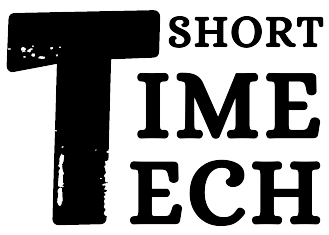The smart home industry has been rapidly evolving, and 2024 is no exception. With cutting-edge advancements and a focus on convenience, security, and energy efficiency, smart home technology has never been more integral to modern living. This article explores the latest innovations and trends shaping smart homes in 2024, ensuring you’re up-to-date with the most trusted and real information.
1. AI-Driven Home Automation
One of the most significant trends in 2024 is the integration of artificial intelligence (AI) into home automation systems. AI is transforming how we interact with our living spaces, offering personalized experiences that adapt to our routines and preferences. For instance, AI-driven systems like Google Nest and Amazon Alexa have evolved beyond basic voice commands. They now anticipate needs, such as adjusting lighting based on time of day or optimizing energy consumption by learning household patterns.
Additionally, AI is being used to enhance security. Smart cameras and doorbells equipped with AI can now distinguish between familiar faces and potential intruders, providing more accurate and timely alerts. These systems not only improve convenience but also significantly increase the safety and security of homes.
2. Energy Efficiency and Sustainability
As climate change concerns grow, energy efficiency and sustainability have become central to smart home technology in 2024. Innovations in this area include smart thermostats, energy-efficient lighting, and intelligent HVAC systems that reduce energy consumption without compromising comfort. Products like the Ecobee SmartThermostat can now integrate with solar panels and other renewable energy sources, allowing homeowners to monitor and manage their energy usage in real-time.
Moreover, the rise of smart appliances designed to minimize waste is another key trend. Refrigerators, washing machines, and dishwashers are now equipped with sensors that optimize water and energy use, contributing to a greener lifestyle. These appliances can also provide insights into usage patterns, helping users make more sustainable choices.
3. Interconnectivity and IoT Integration
The Internet of Things (IoT) continues to expand, leading to greater interconnectivity among smart devices in 2024. This trend has been driven by the development of platforms that unify disparate devices into a single, cohesive ecosystem. For example, the Matter protocol, supported by companies like Apple, Google, and Amazon, allows devices from different manufacturers to communicate seamlessly.
This increased interconnectivity means that smart homes are becoming more intuitive and responsive. Imagine waking up to a home where the blinds open automatically, your coffee starts brewing, and the thermostat adjusts to your preferred morning temperature—all orchestrated by interconnected devices. This level of integration not only enhances convenience but also provides a more personalized living experience.
4. Enhanced Home Security Solutions
Home security has always been a priority for smart home technology, and 2024 brings even more sophisticated solutions. Smart locks, security cameras, and alarm systems have become more advanced, with features like facial recognition, real-time alerts, and integration with emergency services.
Innovations like the Ring Alarm Pro system now offer not just security but also backup internet and smart home hub functionalities, providing a comprehensive solution for home protection. Additionally, the integration of AI in security systems means better threat detection and fewer false alarms, ensuring that homeowners can feel more secure than ever before.
5. Voice Control and Gesture Recognition
Voice control remains a cornerstone of smart home technology, but 2024 has seen the rise of gesture recognition as a complementary control method. Devices equipped with gesture recognition can detect and respond to simple hand movements, allowing for a more intuitive and contactless way of interacting with smart home systems. This technology is particularly beneficial in kitchens, bathrooms, and other areas where hands-free operation is desirable.
Moreover, voice control systems have become more sophisticated, with natural language processing enabling more conversational and accurate commands. Voice assistants like Amazon Alexa and Google Assistant are now better at understanding context and providing more relevant responses, making smart homes easier to control.
Conclusion
Smart home technology in 2024 is defined by AI-driven automation, energy efficiency, interconnectivity, enhanced security, and innovative control methods. These advancements are making homes more comfortable, secure, and sustainable, reflecting the ongoing evolution of the smart home industry. As technology continues to progress, staying informed about these trends ensures that you can make the most of what modern smart homes have to offer.

